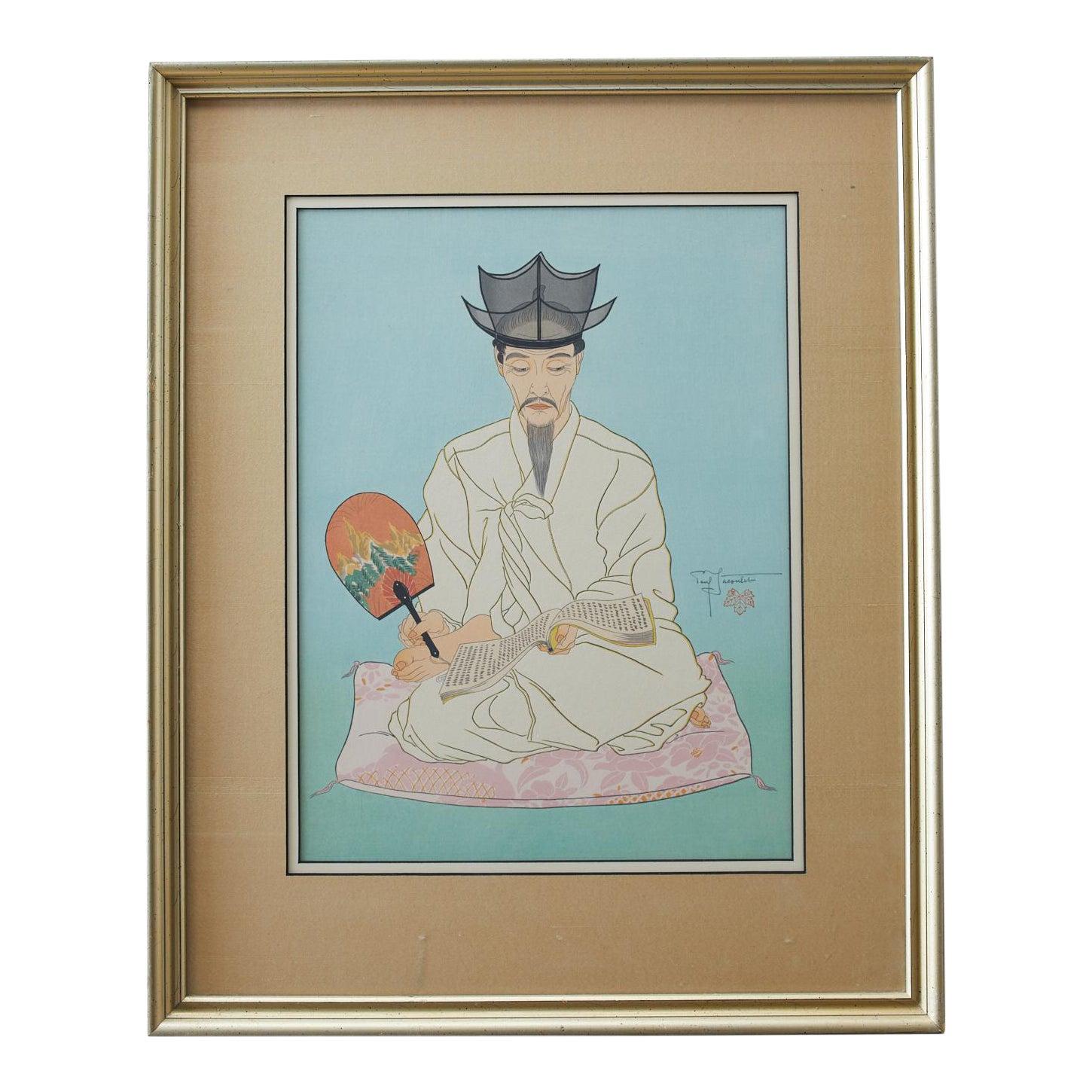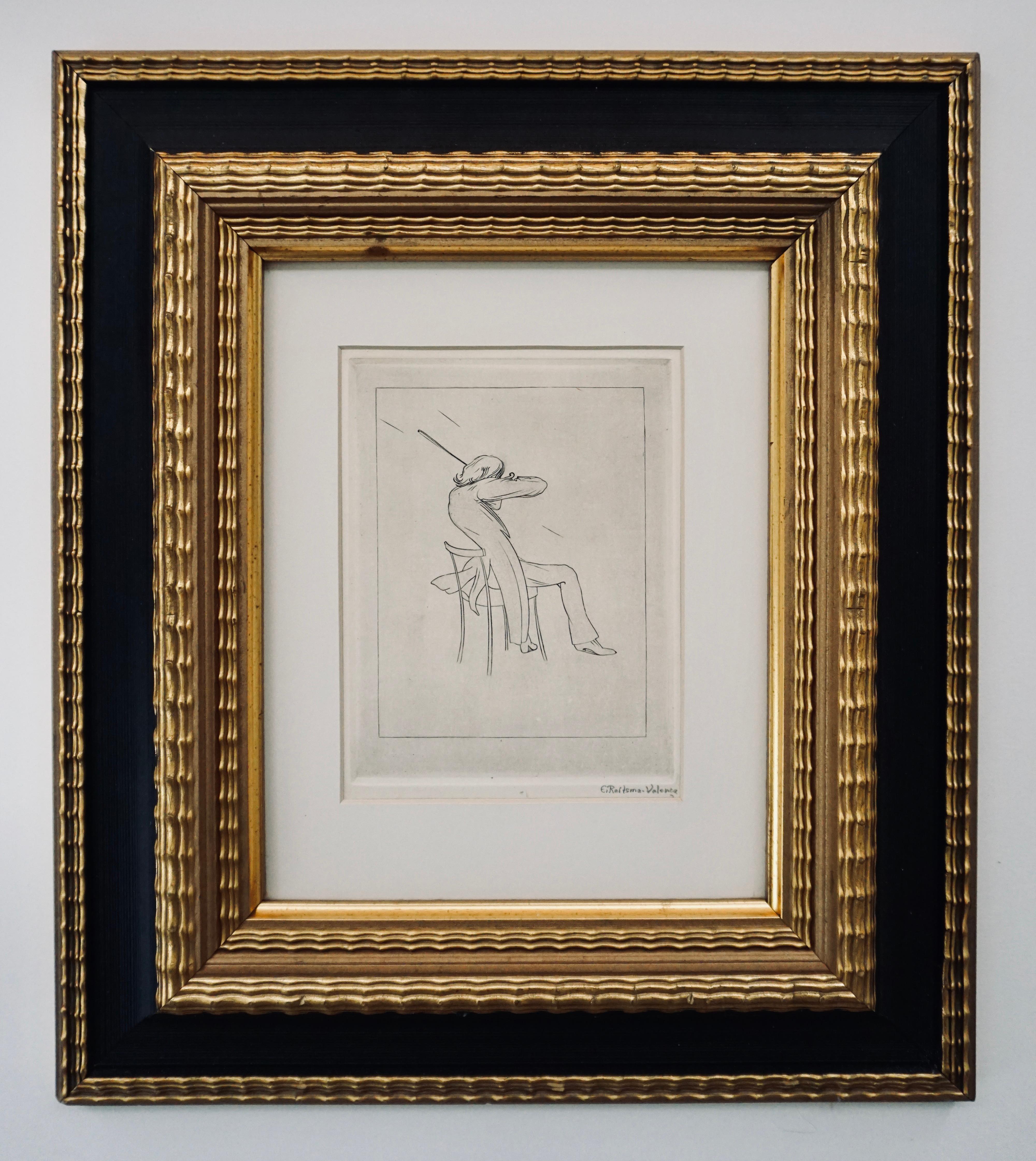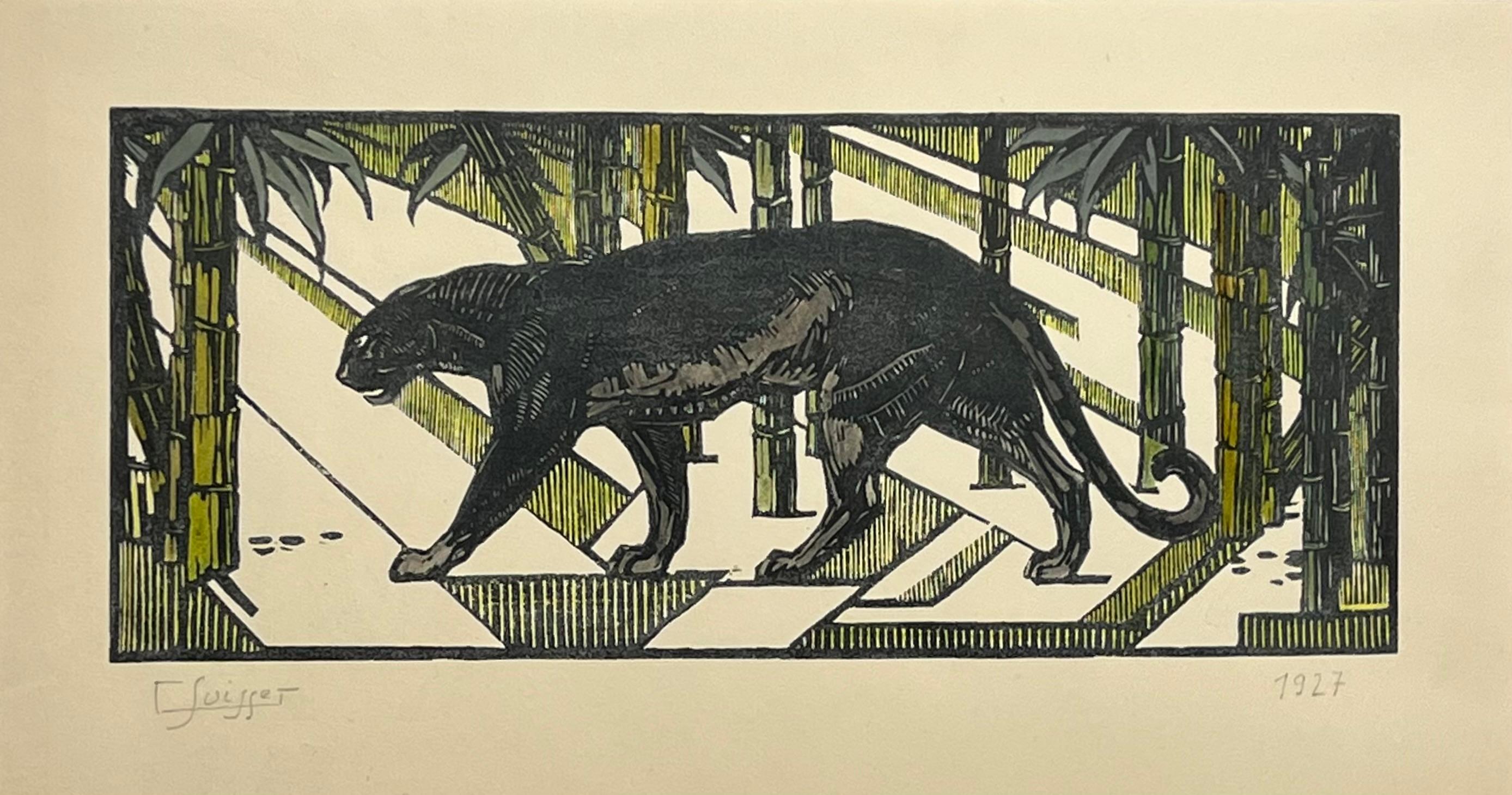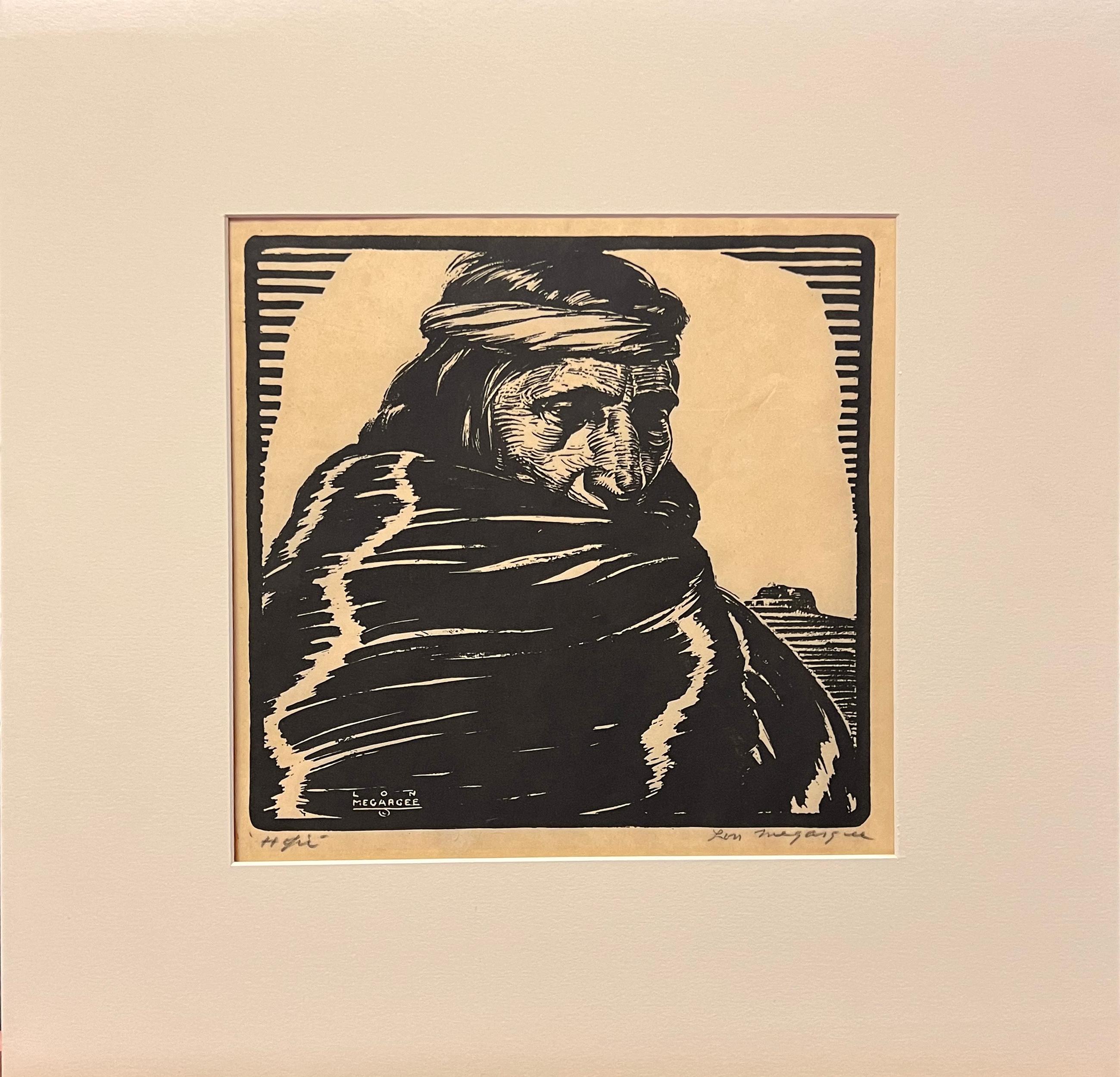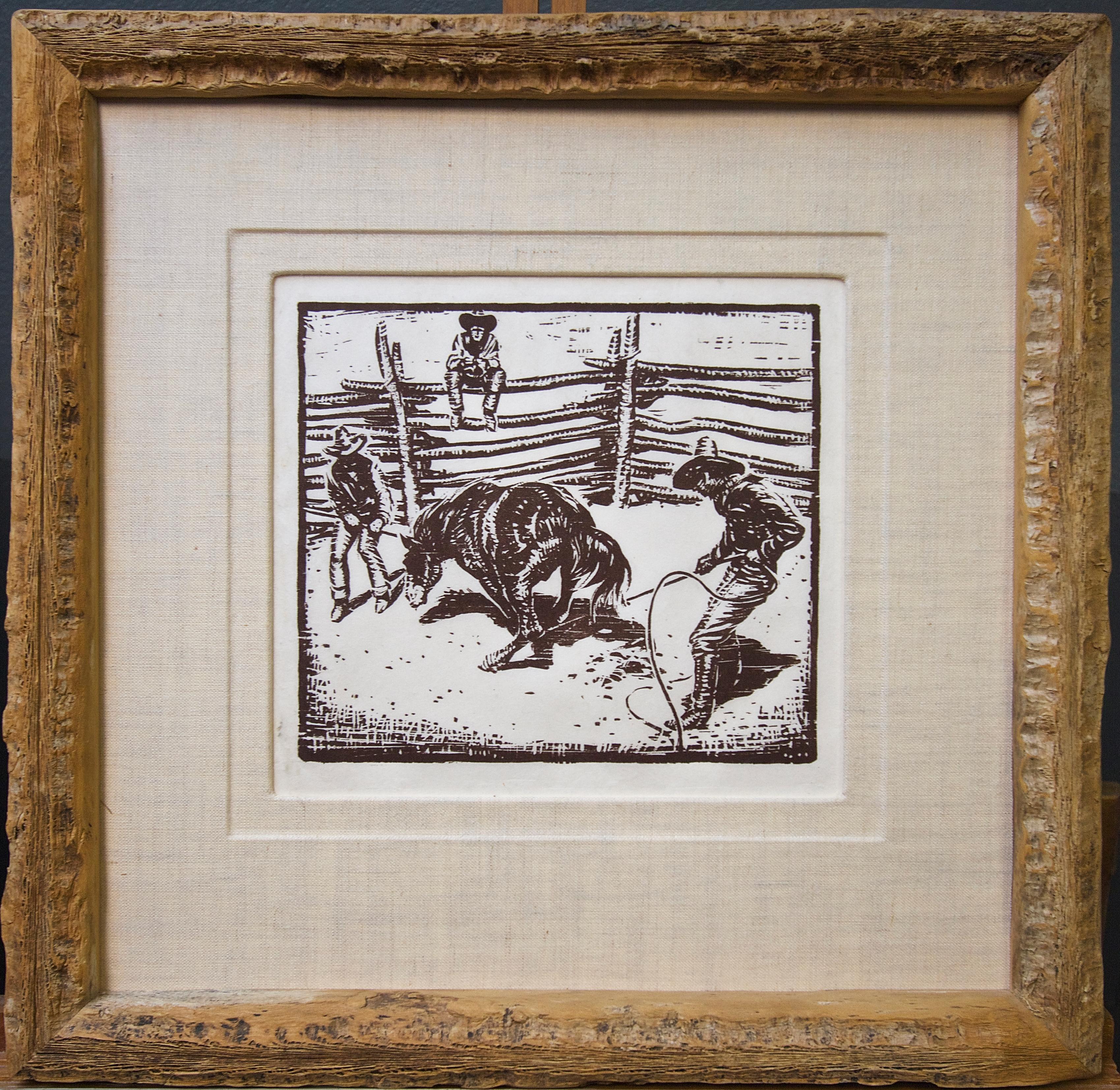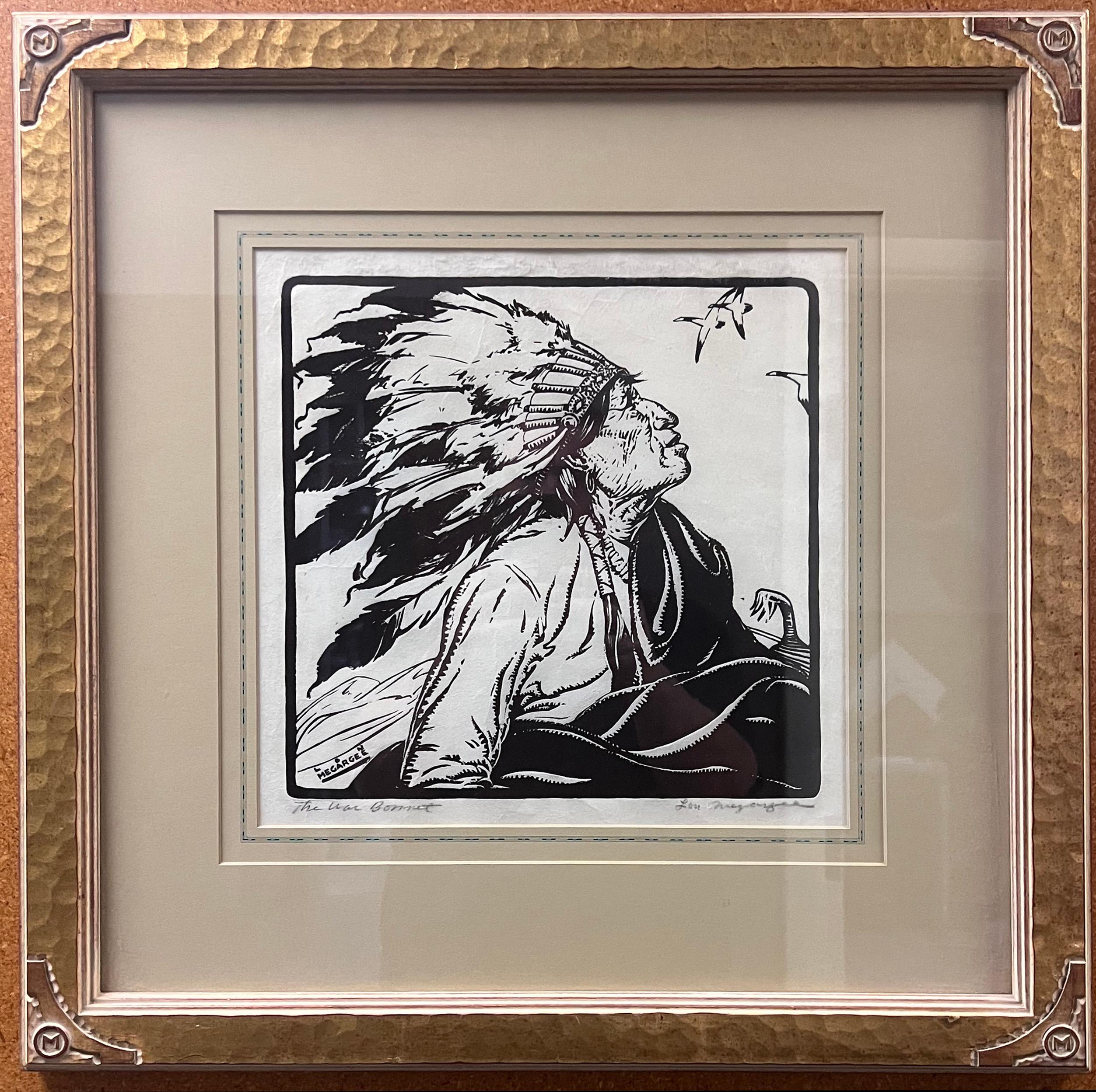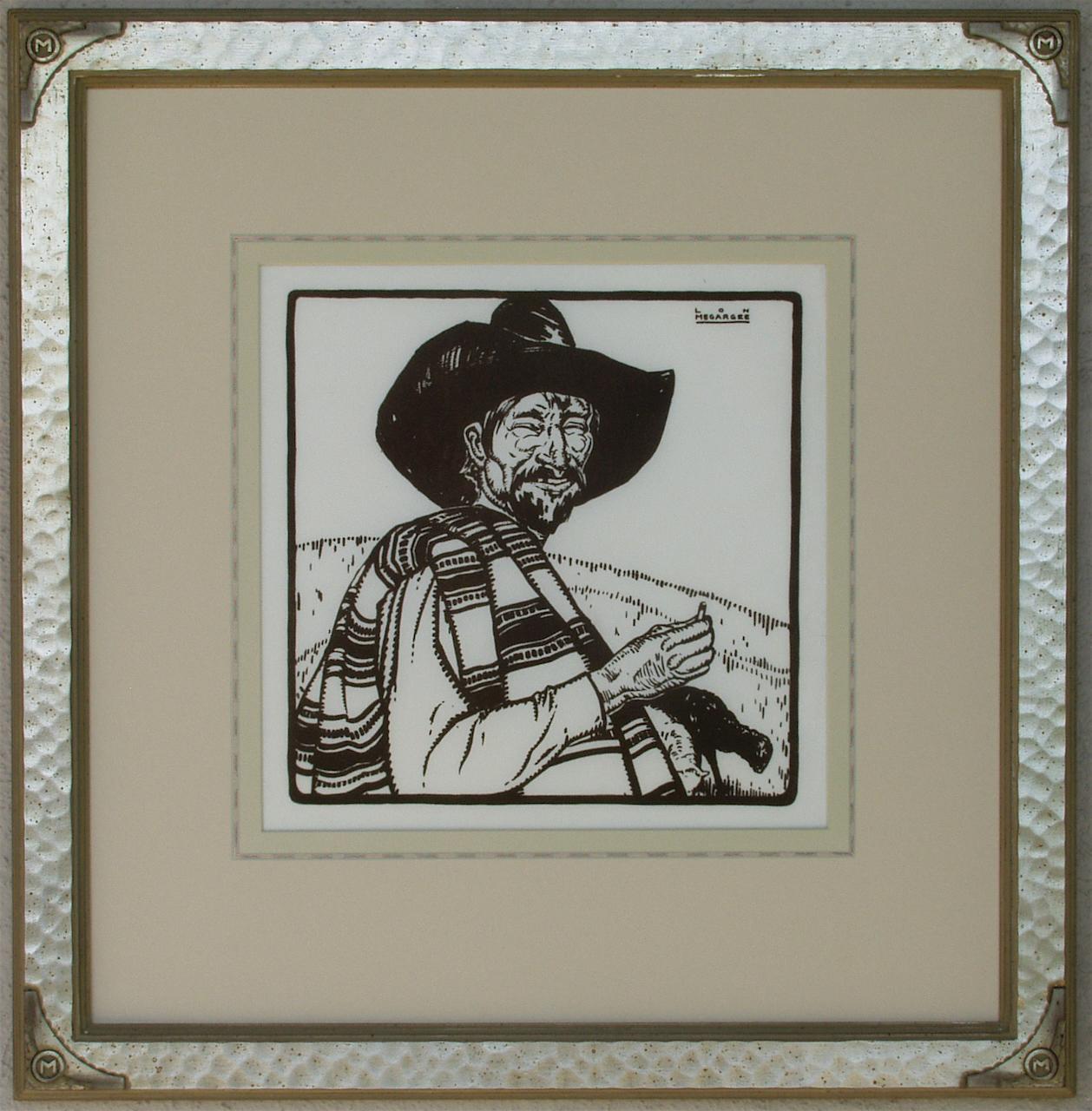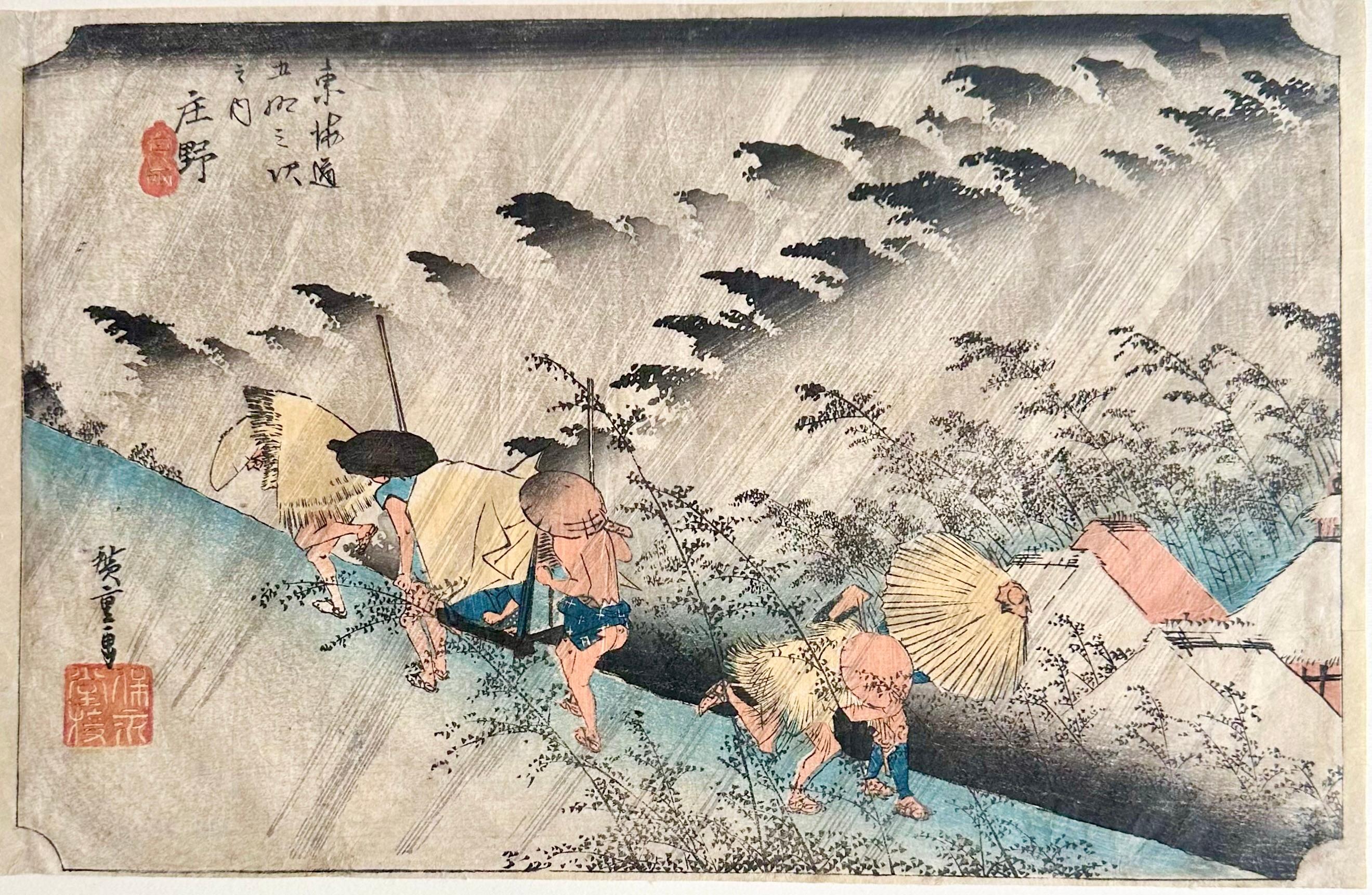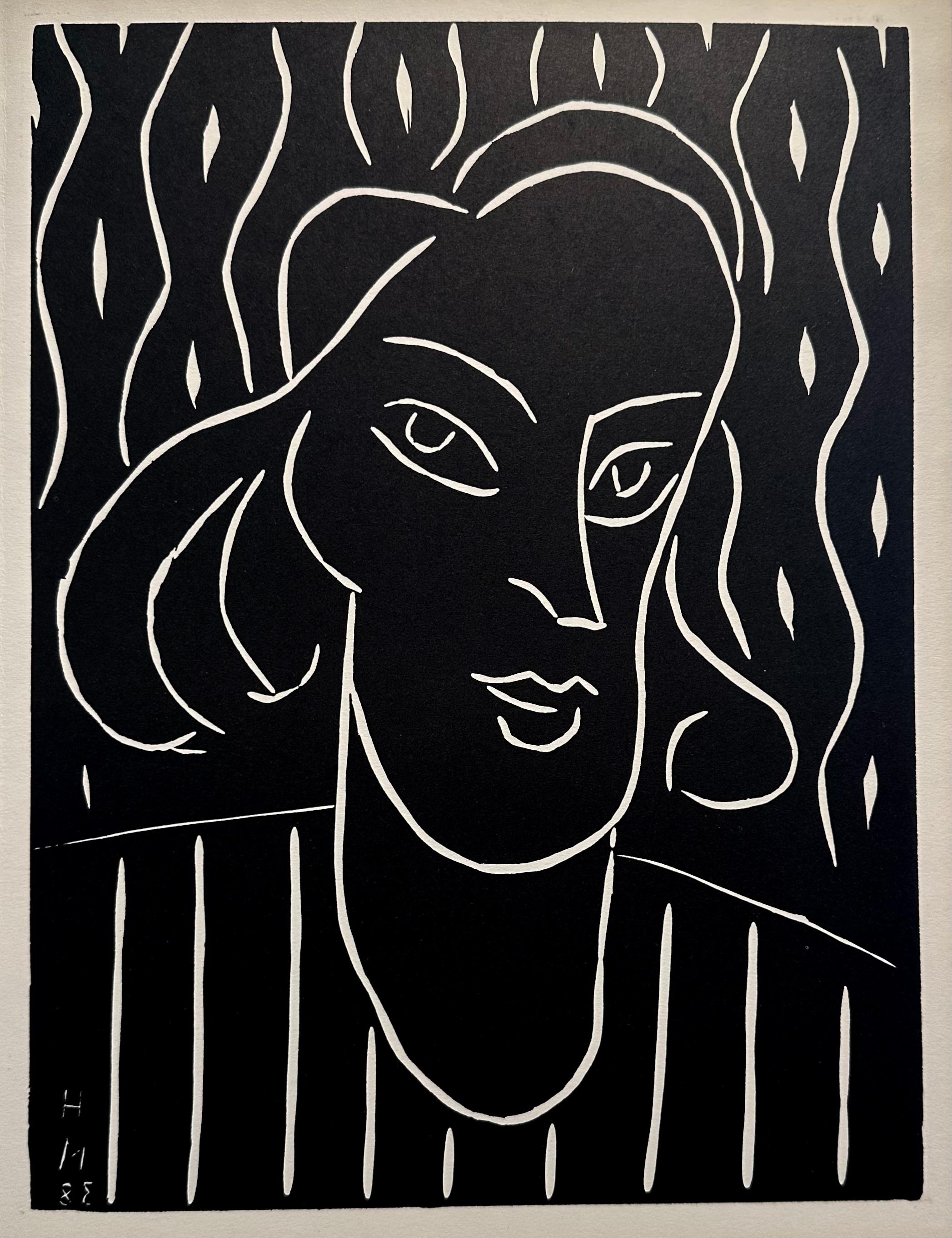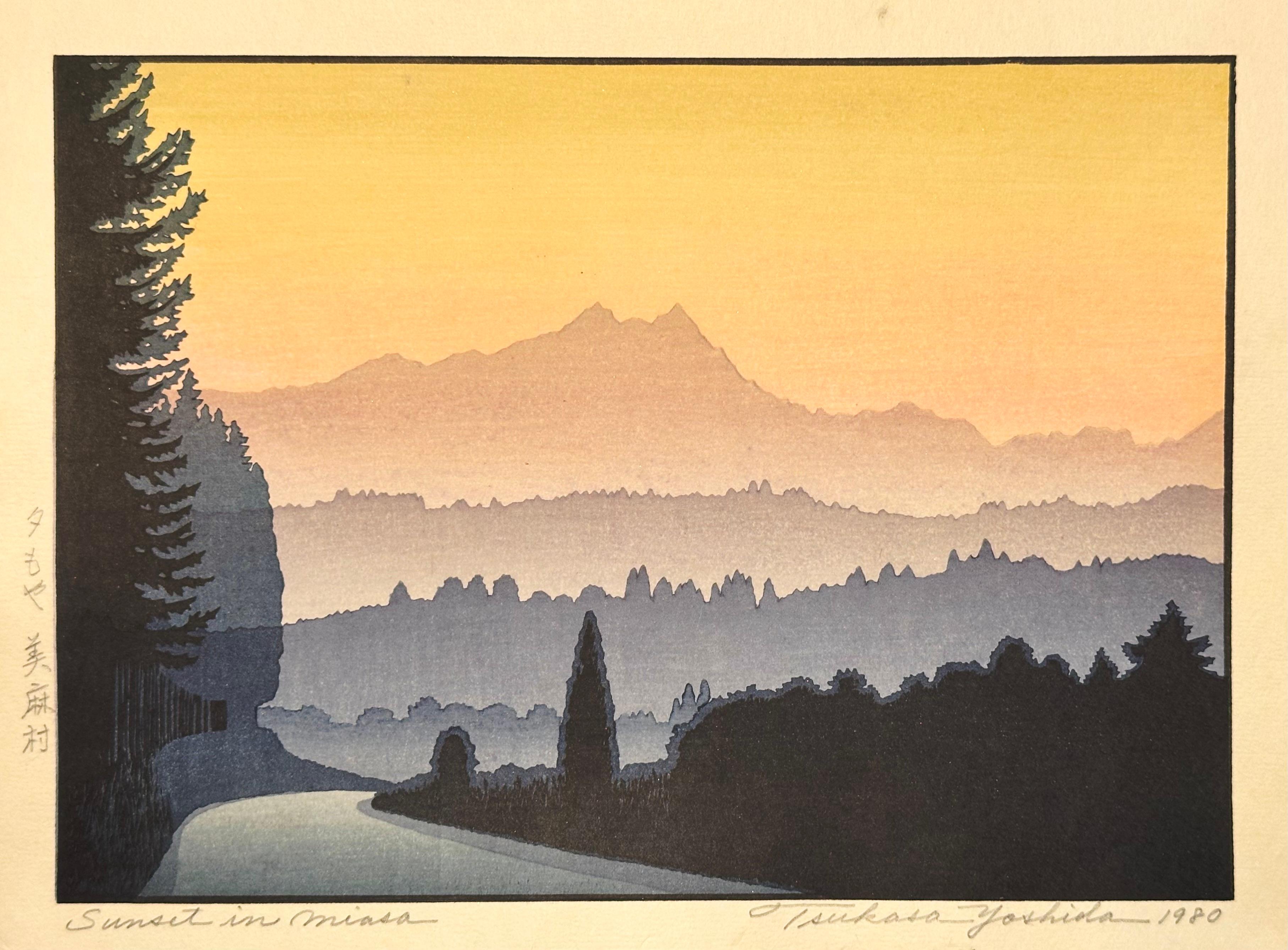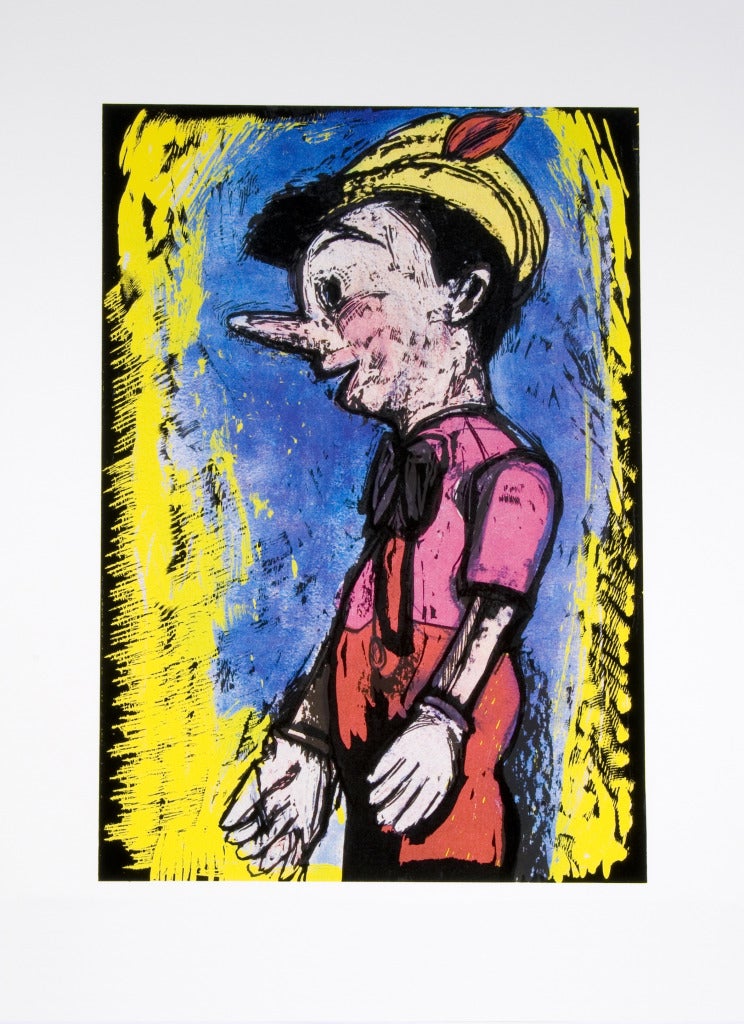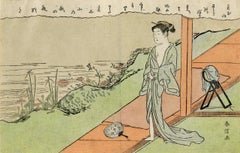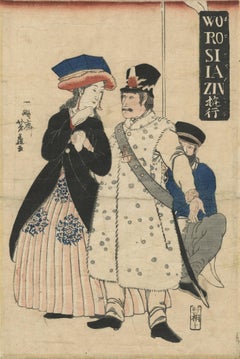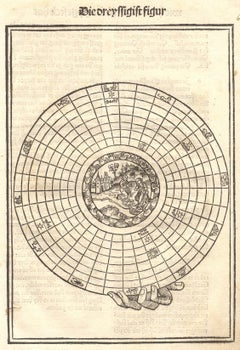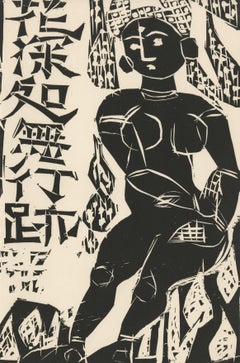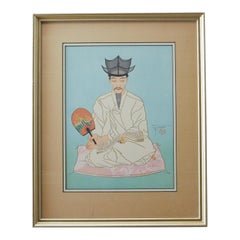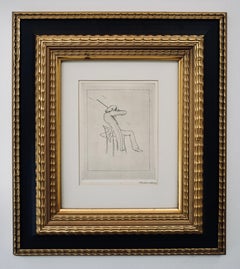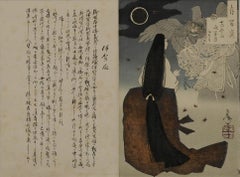
Mt. Yoshino Midnight Moon (Yoshinoyama Yowa No Tsuki)
View Similar Items
Want more images or videos?
Request additional images or videos from the seller
1 of 5
Taiso YoshitoshiMt. Yoshino Midnight Moon (Yoshinoyama Yowa No Tsuki)1886
1886
Price:$1,020.20
$1,200List Price
About the Item
- Creator:Taiso Yoshitoshi (1839-1892, Japanese)
- Creation Year:1886
- Dimensions:Height: 13.38 in (33.99 cm)Width: 18 in (45.72 cm)
- Medium:
- Period:
- Condition:Some fading of pink cartouche.
- Gallery Location:Fairlawn, OH
- Reference Number:Seller: UK20131stDibs: LU1405559211
About the Seller
5.0
Recognized Seller
These prestigious sellers are industry leaders and represent the highest echelon for item quality and design.
Gold Seller
Premium sellers maintaining a 4.3+ rating and 24-hour response times
Established in 1978
1stDibs seller since 2013
796 sales on 1stDibs
Associations
International Fine Print Dealers Association
Authenticity Guarantee
In the unlikely event there’s an issue with an item’s authenticity, contact us within 1 year for a full refund. DetailsMoney-Back Guarantee
If your item is not as described, is damaged in transit, or does not arrive, contact us within 7 days for a full refund. Details24-Hour Cancellation
You have a 24-hour grace period in which to reconsider your purchase, with no questions asked.Vetted Professional Sellers
Our world-class sellers must adhere to strict standards for service and quality, maintaining the integrity of our listings.Price-Match Guarantee
If you find that a seller listed the same item for a lower price elsewhere, we’ll match it.Trusted Global Delivery
Our best-in-class carrier network provides specialized shipping options worldwide, including custom delivery.More From This Seller
View AllBeauty on a Veranda with Fan and Mirror
By Suzuki (Hozumi) Harunobu
Located in Fairlawn, OH
Signed: Harunobu ga
Series: Series: Eight Fashionable Parlor Views (Furyu zashiki hakkei)?
Format Japanese: chuban
Provenance:
Private Collection, Philadelphia
Collection of McCleaf
...
Category
Mid-18th Century Edo Prints and Multiples
Materials
Woodcut
WO RO SI IA ZIN Russian Soldier with His Family
Located in Fairlawn, OH
WO RO SI IA ZIN Russian Soldier with His Family
Color woodcut, 1861 2nd month
Signed upper left (see photo)
Titled upper right in black cartouche (see photo)
Format: oban
Style: Yokohama-e
Publisherr: Sagamiya Tokichi (Marks #435) active 1955-1866
Metropolitan Museum of Art in New York, has an impression of this image
RARE
Condition: with usual aging
Image size: 13 7/8 x 9 3/8 inches
Rebecca Salter in her Japanese Popular Prints... on page 18 gives a different take on the situation that Yoshifuji found himself in.
"A giant of the period, however, was Utagawa Kuniyoshi (1797-861). Although best known for warrior prints which reflected the militaristic undercurrents of the time, he was also responsible for some of the most light-heartend and humorous works in this book. His followers in the Utagawa school, Utagawa Yoshitsuya...
Category
1860s Other Art Style Figurative Prints
Materials
Woodcut
Father Stefan Fridolin, "Schatzbehalter" (Treasury of the True Riches
Located in Fairlawn, OH
Father Stefan Fridolin, "Schatzbehalter" (Treasury of the True Riches of Salvation): The 30th Figure - Astrological Diagram with Scene of the Nativity
Woodcut, 1491
Unsigned, as issued
Published by Anton Koberger
Diagram has Zodiac signs on outer ring, planets in the lower registers, and Nativity in the center.
Condition: Very good for a 15h century woodcut, with the usual slight age stains
Sheet size: 11 1/2 x 8 1/4 inches
Wogelmut was the teacher of Albrecht Durer and employed young Durer in many project of the last decade of the 15th century.
Michel Wolgemut Biography
Wolgemut trained with his father Valentin Wolgemut (who died in 1469 or 1470) and is thought to have been an assistant to Hans Pleydenwurff in Nuremberg. He worked with Gabriel Malesskircher in Munich early in 1471, leaving the city after unsuccessfully suing Malesskircher's daughter for breach of contract, claiming she had broken off their engagement. He then returned to his late father's workshop in Nuremberg, which his mother had maintained since Valentin's death.
In 1472 he married Pleydenwurff's widow and took over his workshop;[3] her son Wilhelm Pleydenwurff worked as an assistant, and from 1491 a partner, to Wolgemut. Some consider Wilhelm a finer artist than Wolgemut, however he died in January 1494, when he was probably still in his thirties. Wilhelm's oeuvre remains unclear, though works in various media have been attributed to him.
Woodcuts
Michael Wolgemut, Danse Macabre, 1493
Two large and copiously illustrated books have woodcuts supplied by Wolgemut and his stepson Wilhelm Pleydenwurff; both were printed and published by Germany's largest publisher, the Nuremberger Anton Koberger, who was also Dürer's godfather. The first is the Schatzbehalter der wahren Reichthumer des Heils (1491); the other is the Historia mundi, by Schedel (1493), usually known as the Nuremberg Chronicle...
Category
15th Century and Earlier Old Masters Figurative Prints
Materials
Woodcut
No Footprints Show, Where the Flowers Grow Deep
By Shiko Munakata
Located in Fairlawn, OH
No Footprints Show, Where the Flowers Grow Deep
Woodcut, 1961
Unsigned (as isssued)
From: The "Way" of the Woodcut, three woodcuts, 1961
Publisher: Pratt Adlib Press, Brooklyn, New Y...
Category
1960s Modern Figurative Prints
Materials
Woodcut
Morita Kanya XIII As Genta Kagesue in the play Genta Kando
By Natori Shunsen
Located in Fairlawn, OH
Morita Kanya XIII As Genta Kagesue in the play Genta Kando
Color woodcut, 1928
Signed and stamped middle right edge
Natori stamp lower left image edge
Series: Collection of Creative...
Category
1920s Showa Figurative Prints
Materials
Woodcut
Xylon 21 Naoko Matsubara USA
Located in Fairlawn, OH
Xylon 21 Naoko Matsubara USA
Woodcuts, two which are printed in color, 1970
2 of the 5 woodcuts signed in pencil (see photos)
Five original woodcuts, two of which are signed in penci...
Category
1970s Abstract Figurative Prints
Materials
Woodcut
You May Also Like
Le Vieux Manuscrits, Coree-Seoul
By Paul Jacoulet
Located in Rio Vista, CA
Fascinating artwork titled Le Vieux manusrits (old writings Seoul Korea) by Paul Jacoulet. (French-Japanese 1896-1960) finely crafted with lovely graduating background color blue to light green. Depicts a figure seated on a pink pillow wearing a Korean hat...
Category
20th Century Realist Figurative Prints
Materials
Woodcut
Violinist
Located in Berlin, MD
Engelina (Engelien) Reitsma-Valença (3 May 1889 - 11 July 1981) Amsterdam, Netherland. The portrait is of a violinist playing what appears to be an enervating piece. An engraver, st...
Category
Early 20th Century Art Deco Figurative Prints
Materials
Woodcut
EROTIC DREAM, Woodcut, Limited Edition, signed by the Artist
Located in Palm Desert, CA
"EROTIC DREAM" (1976) by Norbert Matzdorf
Woodcut print on paper
Limited Edition, numbered (10.3), dated and hand-signed by the artist
27,9 x 38,3 cm
Norbert Matzdorf (1951 – 2013) ...
Category
1970s Figurative Prints
Materials
Paper, Woodcut
Art deco handcolored woodcut on paper - Walking black panther by Gaston Suisse
Located in Les Acacias GE, GE
Gaston Suisse (1896-1988)
Panthère noire dans les bambous, 1927
Gravure sur bois, sur papier Velin de Van Gelder.
Rehaussé aux lavis d’encre de Chine par l’artiste
Signé en bas à gauche et daté 1927 en bas à droite
Black panther in a forest of bamboos, 1927
A handcolored woodcut on Velin de Van Gelder paper
Signed and dated 1927
Bibliographie /Literature
Gaston Suisse, splendeur du laque art déco. Emmanuel Bréon. Somogy Éditions d'art, Paris 2013, reproduite page 105 (un autre exemplaire reproduit)
The artist made a wood engraving of which he made about twenty prints himself.
These proofs were not marketed as is, Gaston Suisse reworked each of the proofs using Indian ink washes in order to obtain different effects for each proof, which are thus unique original works.
Born in 1896 in a family of artists, his father Georges was a close friend of Siegfried Bing and a great lover of Japanese art and a bibliophile. He passed his taste for art to his son whom he often took to draw at the Botanic Garden . Around 1910, Gaston Suisse, who hasn't entered yet the artistic school, met Paul Jouve, then 18 years his elder, who was already famous.
In 1911, at the age of 17, he entered the National School of Decorative Art where he followed the teachings of Paul Renouard. Thanks to his knowledge and taste for the Japanese art, he chose lacquer painting as his specialty. His practice of this noble and demanding subject were so much appreciated that he was awarded with two gold medals in 1913 and 1914. Mobilized during the war , he joined the army and go in Salonika where he found his friend Jouve. In 1918, he finished his studies at the School of Applied Arts in order to perfect his training. He learned in particular the techniques of gilding and oxidation of metals. The first productions of Gaston Suisse, furniture and objects in lacquer with geometrical patterns, were an instant success and Suisse was appointed as member of Salon d'Automne in 1924, the very year of his first exhibition. Considered as an artist-decorator, his sincere and deep friendship with Jouve linked him in parallel with the groups of the animaliers of the Jardin des Plantes and became a close friend of Edouard-Marcel Sandoz. When travelling to Maghreb and Middle-East between 1923 and 1925, he produced numerous drawings representing antelopes, apes and fennec foxes...
Category
1920s Art Deco Animal Prints
Materials
India Ink, Woodcut
Bronc by Lon Megargee, Woodblock Print ca. 1920s with Handmade Saguaro Rib Frame
Located in Phoenix, AZ
SHIPPING CHARGES INCLUDE SHIPPING, PACKAGING & **INSURANCE**
Bronc by Lon Megargee, Woodblock Print ca. 1920s
Handmade Saguaro Rib Frame, double linen mat, museum archival materials
Bronc
Woodblock Print, signed in print
Image: 8 3/4 x 9 7/8 inches
Frame: 21 x 20 inches
SHIPPING CHARGES INCLUDES, SHIPPING, PACKAGING & INSURANCE
FINE ART ESTATE OF LON MEGARGEE
Megargee Custom Handmade Saguaro Frame
We offer signed in print and original signature block prints. Custom, hand carved, signature frames, with archival standards and a speciality in hand dyed mats and french matting are provided for a beautiful and timeless presentation.
Free shipping Continental US
Biography
Megargee explored different mediums; printmaking captivated him in particular. The contrast of the black and white block print method captured perfectly his interpretation of a bold American West. The first print was produced around 1921 and culminated with the creation of “The Cowboy Builds a Loop” in 1933 with 28 images and poetry by his friend, Roy George. Megargee continued producing prints throughout the 1940s and early 50s.
Creator of the iconic logo for the Stetson Hat Company, " Last Drop From his Stetson", still in use today.
Fine Art Estate of Lon Megargee
At age 13, Lon Megargee came to Phoenix in 1896 following the death of his father in Philadelphia. For several years he resided with relatives while working at an uncle’s dairy farm and at odd jobs. He returned to Philadelphia in 1898 – 1899 in order to attend drawing classes at the Pennsylvania Academy of the Fine Arts. Back in Phoenix in 1899, he decided at the age of 16 to try to make his living as a cowboy. Lon moved to the cow country of Wickenburg where he was hired by Tex Singleton’s Bull Ranch. He later joined the Three Bar Ranch . . . and, after a few years, was offered a job by Billy Cook...
Category
Early 20th Century Figurative Prints
Materials
Woodcut
The Sheepherder by Lon Megargee
Located in Phoenix, AZ
Lon Megargee 1883-1960
"The Sheepherder"
Wood block print
Signed in plate, lower right
Image size: 10 x 10 inches
Frame size 22 x 22 inches
Creator of Stetson's hat logo "Last Drop from his Hat"
Lon Megargee
1883 - 1960
At age 13, Lon Megargee came to Phoenix in 1896 following the death of his father in Philadelphia. For several years he resided with relatives while working at an uncle’s dairy farm and at odd jobs. He returned to Philadelphia in 1898 – 1899 in order to attend drawing classes at the Pennsylvania Academy of the Fine Arts. Back in Phoenix in 1899, he decided at the age of 16 to try to make his living as a cowboy.
Lon moved to the cow country of Wickenburg, Arizona where he was hired by Tex Singleton’s Bull Ranch. He later joined the Three Bar R. . . and after a few years, was offered a job by Billy Cook of the T.T. Ranch near New River. By 1906, Megargee had learned his trade well enough to be made foreman of Cook’s outfit.
Never shy about taking risks, Lon soon left Cook to try his own hand at ranching. He partnered with a cowpuncher buddy, Tom Cavness, to start the El Rancho Cinco Uno at New River. Unfortunately, the young partners could not foresee a three-year drought that would parch Arizona, costing them their stock and then their hard-earned ranch.
Breaking with his romantic vision of cowboy life, Megargee finally turned to art full time. He again enrolled at the Pennsylvania Academy of Art and then the Los Angeles School of Art and Design during 1909 – 1910. The now well-trained student took his first trip to paint “en plein air” (outdoors) to the land of Hopi and Navajo peoples in northern Arizona. After entering paintings from this trip in the annual Territorial Fair at Phoenix, in 1911, he surprisingly sold his first oil painting to a major enterprise – the Santa Fe Railroad . . . Lon received $50 for “Navajos Watching the Santa Fe Train.” He soon sold the SFRR ten paintings over the next two years. For forty years the railroad was his most important client, purchasing its last painting from him in 1953.
In a major stroke of good fortune during his early plein-air period, Megargee had the opportunity to paint with premier artist, William R. Leigh (1866 – 1955). Leigh furnished needed tutoring and counseling, and his bright, impressionistic palette served to enhance the junior artist’s sense of color and paint application. In a remarkable display of unabashed confidence and personable salesmanship, Lon Megargee, at age 30, forever linked his name with Arizona art history. Despite the possibility of competition from better known and more senior artists, he persuaded Governor George Hunt and the Legislature in 1913 to approve 15 large, historic and iconic murals for the State Capitol Building in Phoenix. After completing the murals in 1914, he was paid the then princely sum of roughly $4000. His Arizona statehood commission would launch Lon to considerable prominence at a very early point in his art career.
Following a few years of art schooling in Los Angeles, and several stints as an art director with movie studios, including Paramount, Megargee turned in part to cover illustrations for popular Western story magazines in the 1920s.
In the 1920s, as well, Lon began making black and white prints of Western types and of genre scenes from woodblocks. These prints he generally signed and sold singly. In 1933, he published a limited edition, signed and hard-cover book (about 250 copies and today rare)containing a group of 28 woodblock images. Titled “The Cowboy Builds a Loop,” the prints are noteworthy for strong design, excellent draftsmanship, humanistic and narrative content, and quality. Subjects include Southwest Indians and cowboys, Hispanic men and women, cattle, horses, burros, pioneers, trappers, sheepherders, horse traders, squaw men and ranch polo players. Megargee had a very advanced design sense for simplicity and boldness which he demonstrated in how he used line and form. His strengths included outstanding gestural (action) art and strong figurative work. He was superb in design, originality and drawing, as a study of his prints in the Hays collection reveals.
In 1944, he published a second group of Western prints under the same title as the first. Reduced to 16 images from the original 28 subjects, and slightly smaller, Lon produced these prints in brown ink on a heavy, cream-colored stock. He designed a sturdy cardboard folio to hold each set. For the remainder of his life, Lon had success selling these portfolios to museum stores, art fairs and shows, and to the few galleries then selling Western art.
Drawing on real working and life experiences, Lon Megargee had a comprehensive knowledge, understanding and sensitivity for Southwestern subject matter. Noted American modernist, Lew Davis...
Category
Early 20th Century American Impressionist Figurative Prints
Materials
Woodcut
Recently Viewed
View AllMore Ways To Browse
Yoshitoshi Taiso
Yoshitoshi Moon
Sasaki Plates
Richter Silkscreen
Roman Polanski
Rubin Ring
Salvador Dali Desert
Sem Georges Goursat
Shinsui Ito
Tea Room Depression Glass
Ted Fuller
Thomas Rowlandson Engraving
Tracey Emin Heart
Vintage Circus Props
Vintage Clinton Watch
Walter Dendy
Wifredo Lam On Sale
Albert Arthur Allen
